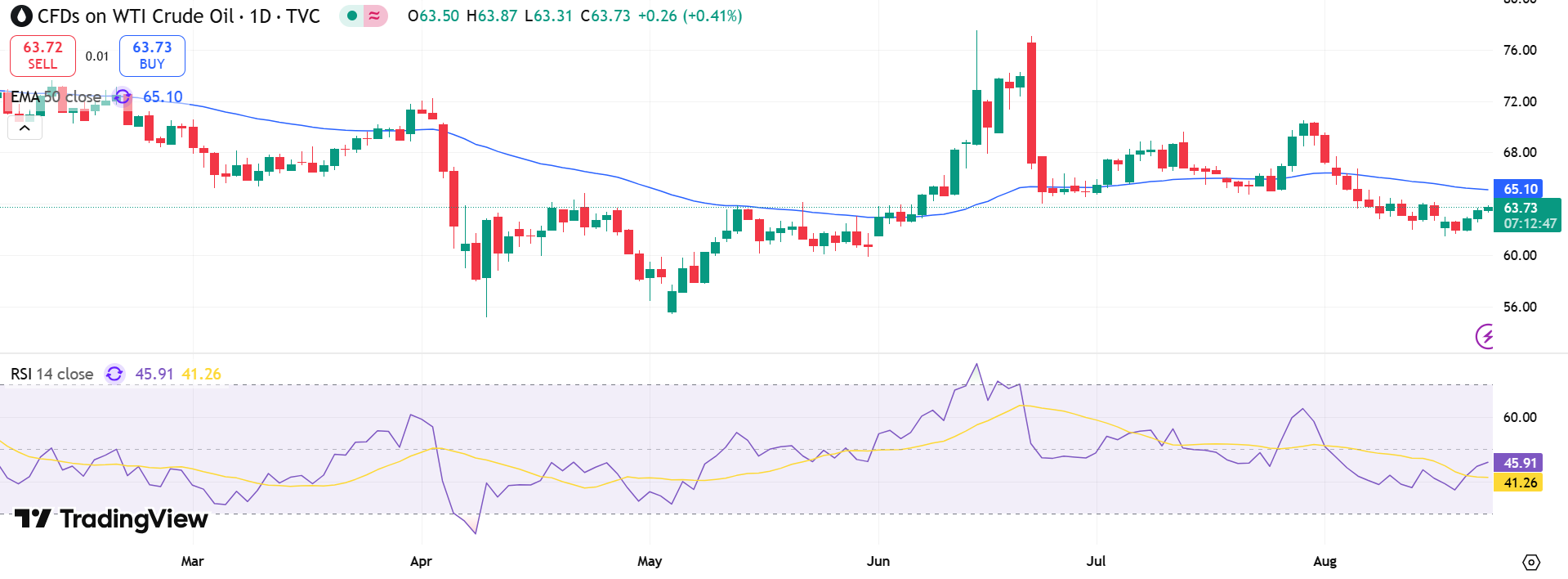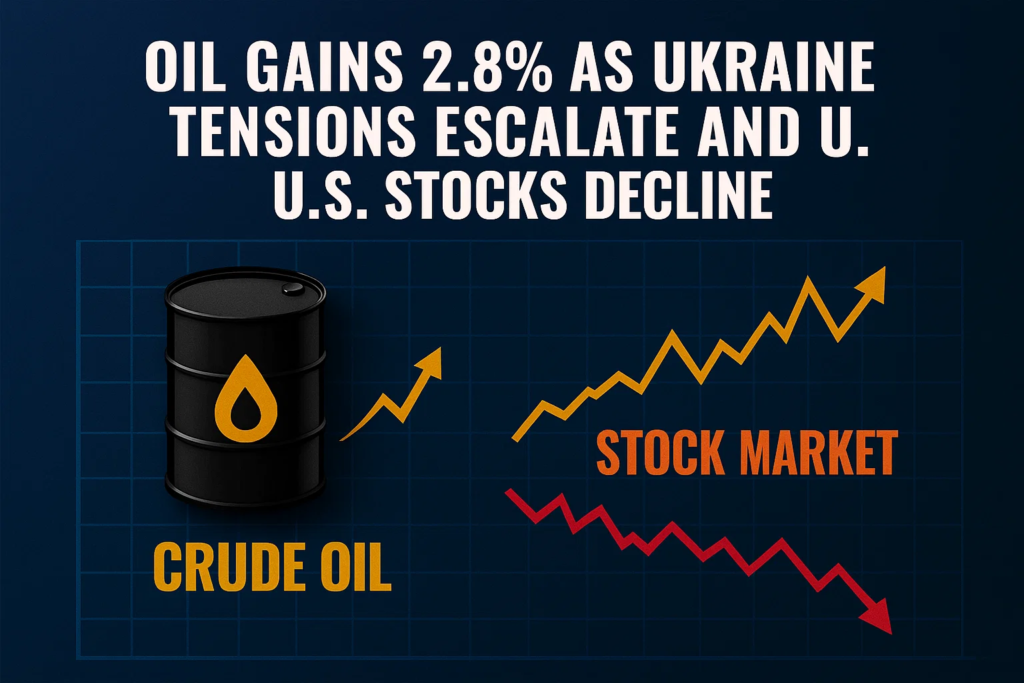Oil prices steadied Friday, positioning for their first weekly gain in three weeks, as renewed military tensions in Ukraine diminished hopes of a near-term peace agreement. Brent crude futures rose 0.12% to $67.75 a barrel by 1200 GMT, while West Texas Intermediate (WTI) gained 0.25% to $63.68. Both benchmarks added more than 1% in Thursday’s session, lifting Brent 2.8% and WTI 1.4% on the week.
Fighting intensified near Ukraine’s western border after Russia launched an airstrike Thursday. In response, Kyiv struck a Russian refinery and the Unecha oil pumping station, a key link in the Druzhba pipeline network that supplies Europe. Hungary confirmed shipments through the line had been halted.
Analysts said political deadlock is likely to persist. “The longer a ceasefire remains out of reach, the greater the probability of additional U.S. sanctions targeting Russia’s energy sector,” ING wrote in a client note.
Peace Talks Face Major Obstacles
President Donald Trump has been pushing for a summit between Russian President Vladimir Putin and Ukrainian President Volodymyr Zelenskiy, though major hurdles remain. Moscow has demanded Ukraine surrender control of the Donbas region, abandon NATO aspirations, and bar Western troops. Zelenskiy has rejected those terms, while Trump pledged that any deal must preserve Ukraine’s territorial integrity.
The stalemate has prompted both Washington and European allies to explore military options should diplomacy fail. Investors remain wary that prolonged conflict could disrupt supply chains and push energy markets into renewed volatility.
Key developments include:
- Pipeline Disruption: Druzhba supplies to Europe suspended after Ukrainian strikes.
- Sanctions Risk: U.S. measures could expand if negotiations falter.
- Leadership Talks: Summit discussions stalled over irreconcilable terms.
U.S. Stocks Show Strong Demand
Oil prices also found support from tighter U.S. inventories. The Energy Information Administration reported a 6 million-barrel draw in crude stockpiles for the week ended August 15, well above expectations for a 1.8 million-barrel decline. The sharper-than-forecast drop signals resilient demand despite global economic headwinds.

However, weak data from Germany tempered the bullish momentum. Europe’s largest economy contracted 0.3% in the second quarter, raising concerns about fuel consumption in the region.
Markets are also looking to the Jackson Hole Symposium for direction on U.S. monetary policy. Lower interest rates could spur economic growth and, in turn, increase energy demand. Federal Reserve Chair Jerome Powell is expected to signal whether easing measures remain on the table as inflation and growth trends evolve.
For now, oil appears poised to close the week in positive territory, with geopolitical risks and stockpile trends outweighing weaker macroeconomic signals.


